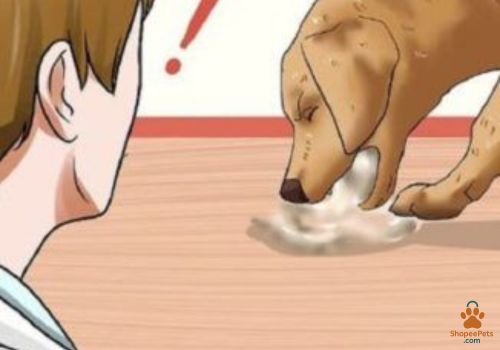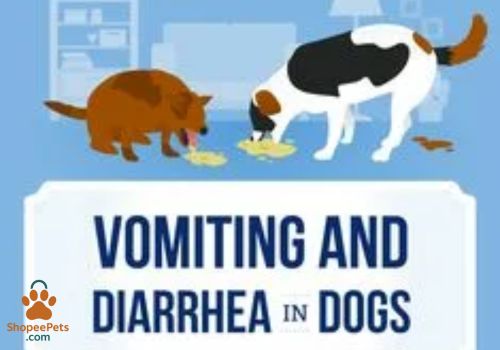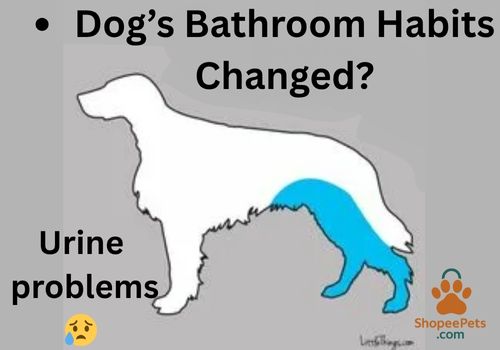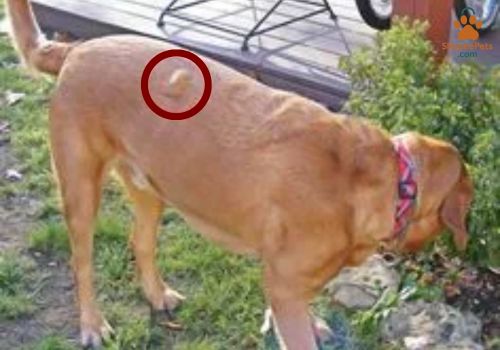Is Your Dog Sick? 10 Warning Signs Every Pet Owner Should Know
Introduction
It’s a peaceful Sunday morning, and you notice your usually playful pup choosing to nap instead of chasing their favorite ball. Or maybe their enthusiasm for dinner suddenly wanes. As a first-time dog owner, these subtle changes might seem small, but they tug at your heart. You wonder, Is something wrong? Could this be a dog illness symptom?
Dogs are family—our loyal companions through thick and thin. When they’re not feeling well, it’s natural to worry and want to act fast. Yet, knowing how to spot the early signs of dog sickness isn’t always straightforward. Dogs, after all, are masters at hiding pain and discomfort. But here’s the good news: learning to recognize these symptoms is not only possible, it’s empowering. By paying close attention to changes in behavior, appetite, and physical signs, you can catch dog illness symptoms early and help your furry friend get the care they need—before minor issues become major ones.
You might notice your usually energetic pup choosing to nap more, and while this could be nothing serious, it’s important to recognize when it might be a dog illness symptom worth watching. This guide will walk you through the 10 key warning signs every dog owner should know, with clear explanations, comforting advice, and tips on when it’s time to call the vet.
Why Early Detection Matters

Dogs are instinctive survivors. When they feel sick or hurt, they often hide their symptoms to avoid appearing vulnerable. This natural behavior means many dog illness symptoms can start subtly and easily be mistaken for “just a phase.”
For instance, I once heard about a dog named Bella whose owner thought her mild lethargy was just a lazy day. But within 24 hours, Bella’s condition worsened, revealing an underlying infection that needed immediate treatment.
This story highlights why early detection matters so much. Spotting dog health warning signs early can prevent complications, help your vet diagnose problems sooner, and increase your dog’s chances of a swift recovery. It also saves you the heartache of seeing your dog suffer unnecessarily.
As you become familiar with common dog diseases symptoms—like changes in eating habits, unusual tiredness, or coughing—you’ll develop confidence in monitoring your dog’s health. Trust your instincts. If something feels “off,” even just a little, it’s worth paying attention. Knowing the early signs of dog sickness can truly be a lifesaver.
10 Warning Signs Your Dog Might Be Sick
Here are 10 dog illness symptoms every pet owner should know, explained in everyday language and with practical advice on when to seek veterinary help.
1. Loss of Appetite or Sudden Changes in Eating Habits

Have you ever noticed your dog turning away from their favorite food or eating less than usual? Loss of appetite can be one of the earliest dog illness symptoms. It may indicate anything from mild digestive upset to more serious issues like dental pain, infections, or organ problems.
If your dog refuses food for more than 24 hours or shows signs of discomfort while eating, it’s time to check with your vet. Sometimes, a sudden change in eating habits can signal a condition needing prompt attention.
2. Lethargy or Unusual Tiredness

Your dog used to greet you with a wagging tail and now barely lifts their head. This kind of lethargy is a key dog health sign. While dogs need rest, especially after play, prolonged tiredness can point to illnesses like anemia, infections, or heart disease.
If your dog’s energy dips noticeably for over a day, or they seem weak and uncoordinated, don’t wait. This dog illness symptom should prompt a vet visit to rule out serious problems.
3. Vomiting or Diarrhea

Throwing up or having diarrhea occasionally might not alarm you immediately, especially if your dog ate something strange. But frequent vomiting or diarrhea lasting more than 24 hours is a red flag. These symptoms could indicate anything from infections and parasites to toxins or even organ failure.
Monitor for additional signs like blood in vomit or stool, dehydration, or discomfort. If you notice these, call your vet promptly.
4. Coughing or Difficulty Breathing

A dry or hacking cough, wheezing, or labored breathing are clear dog illness symptoms that should never be ignored. These signs can signal respiratory infections, heart disease, allergies, or more serious conditions like pneumonia.
If your dog struggles to breathe or coughs persistently, seek veterinary care immediately, as breathing difficulties can quickly become emergencies.
5. Changes in Urination or Defecation

Frequent urination, straining, accidents indoors, or changes in stool consistency can indicate urinary tract infections, kidney issues, or digestive problems. This dog illness symptom is often overlooked but vital to notice.
If these changes persist beyond a day or come with pain, blood, or discomfort, schedule a vet visit to diagnose and treat the underlying cause.
6. Excessive Scratching, Licking, or Skin Issues

If your dog suddenly becomes a scratch machine or develops red, flaky patches on their skin, allergies, parasites (like fleas), or infections might be the culprit. Skin problems can also point to deeper issues like hormone imbalances.
Persistent itching or sores require a vet’s evaluation, especially if your dog appears in pain or the condition worsens.
7. Unexplained Weight Loss or Gain

Noticeable weight changes without changes in diet or exercise should always raise concern. Sudden weight loss can be a dog illness symptom of chronic disease, cancer, or metabolic disorders. Weight gain might suggest hormonal imbalances or fluid retention.
Tracking your dog’s weight regularly helps catch these signs early and discuss with your vet as needed.
8. Swelling or Lumps on the Body

Finding a lump can be scary, but not all bumps are dangerous. However, any new, growing, or painful swelling should be checked by your vet. Some lumps are benign cysts, while others could be tumors or abscesses.
Early veterinary assessment ensures proper diagnosis and peace of mind.
9. Changes in Behavior or Signs of Pain

Dogs can’t tell us when something hurts, but changes like increased irritability, hiding, whimpering, or reluctance to move can be key dog illness symptoms. Pain might result from injuries, arthritis, or internal issues.
If your dog acts “off” behaviorally for more than a day, a vet visit can help identify pain and provide relief.
If your dog is a double-coated breed, regular care can prevent skin issues and discomfort. Check out our Grooming Tips for Double-Coated Dog Breeds for practical advice.
10. Pale or Discolored Gums

Healthy gums should be pink and moist. Pale, white, bright red, or bluish gums can indicate serious health problems like anemia, shock, or heart disease. This symptom is a clear sign you should not delay veterinary care.
Regularly lifting your dog’s lip to check gums is a simple but powerful part of monitoring your dog’s health.
When Should You Call the Vet?
Recognizing when to seek professional help is crucial. Some symptoms require immediate veterinary attention:
- Persistent vomiting or diarrhea (more than 24 hours)
- Difficulty breathing, coughing up blood, or blue/pale gums
- Seizures, collapse, or loss of consciousness
- Severe pain or trauma
If you notice these red-flag signs, don’t hesitate—call your vet or an emergency clinic right away. For mild symptoms, keep a close eye and consult your vet if they worsen or persist beyond a day.
Knowing when to take your dog to the vet can save your dog’s life and reduce your anxiety as an owner.
How to Monitor Your Dog’s Health at Home
You don’t need special tools to keep tabs on your dog’s health. Simple daily checks make a big difference:
- Observe appetite and energy levels each day.
- Check bathroom habits—any changes in urination or stool should be noted.
- Lift your dog’s lip daily to inspect gum color—healthy gums are pink, moist, and smooth.
- Run your hands gently over your dog’s body to feel for lumps or swelling.
- Watch for excessive scratching or skin changes.
- Keep a symptom diary or use pet health apps to track trends over time.
These dog wellness tips become second nature and deepen your bond while helping you catch dog illness symptoms early.
Preventive Care Tips
Prevention is better than cure. Routine vet visits, vaccinations, balanced nutrition, and regular exercise protect your dog from many common dog diseases symptoms. Some simple habits include:
- Schedule annual wellness exams and stay current on vaccines.
- Offer fresh water and a nutritious diet suited to your dog’s breed, age, and health.
- Create a safe environment free from toxins and hazards.
- Maintain grooming routines to prevent skin issues.
Taking these steps helps keep your dog happy, healthy, and full of life. For detailed info on dog vaccinations, trusted resources like the American Veterinary Medical Association (AVMA) offer great guidance.
FAQs
How to tell if your dog is seriously ill?
Watch for sudden changes like trouble breathing, collapse, seizures, or persistent vomiting—these need immediate veterinary attention.
What is silent pain in dogs?
It’s when dogs hide their discomfort, showing only subtle signs like slight limping or changes in behavior.
How long does 1 hour feel to a dog?
Dogs experience time differently; one hour can feel much longer due to their faster metabolism and attention span.
Is my dog trying to warn me of something?
Yes, dogs often use barking, growling, or body language to alert you to potential dangers or discomfort.
What are the dog illness symptoms of poisoning in dogs?
Look for vomiting, excessive drooling, trembling, seizures, or sudden weakness—immediate care is essential.
Can a sick dog get better on its own?
Mild issues might improve with rest, but many conditions need professional care to avoid complications.
Is milk good for dogs?
Milk can cause digestive upset for many dogs because they often lack the enzyme to digest lactose properly.
Conclusion
Recognizing dog illness symptoms early and monitoring your dog’s health at home are powerful ways to protect your beloved companion. Trust your instincts—no one knows your dog better than you. While some symptoms can be managed with care, others need prompt veterinary attention to prevent complications.
By staying vigilant and proactive, you give your dog the best chance at a happy, healthy life. Remember, those small changes in appetite, energy, or behavior often hold the key to your dog’s well-being. Watch closely, care deeply, and don’t hesitate to reach out to your vet when something feels wrong. Your furry friend depends on you, and your attentive love is the best medicine of all.


Naeem – Founder, ShopeePets
Helping pet lovers choose the best with honest product reviews, practical advice, and trusted guidance for every pet owner.
Visit ShopeePets.com →





